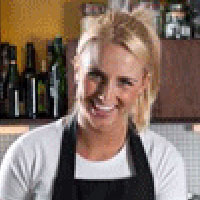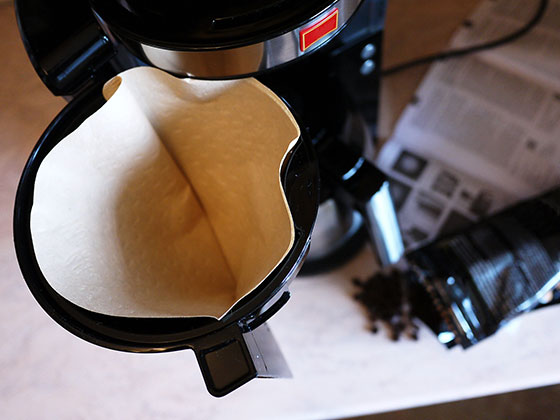The big benefit of drip filter coffee machines has always been convenience. But the humble filter coffee maker now has had a whole lot of sophisticated function added. It’s been 50 years since ‘Mr Coffee’ launched its first product in 1972.
I don’t remember drip filter coffee machines being this good. Is it just me?
How much for a coffee drip machine?
If you’re wondering how much convenience costs, the basic 12 cup drip filter coffee maker is still available under $40. Amazing really when you think of the price of a coffee at a coffee shop. They have to be worth their weight in gold.
Black and Decker’s programmable coffee maker is a good example of a no-frills (but you really still do get some frills), for a cheap price.
Hamilton Beach drip filter includes an automatic shut-off after 2 hours. A handy feature if you don’t want to worry about leaving an appliance on when you head out the door.
But you can pay up to $600, or more, for the sophisticated function of the top-quality Wolf for example. An intuitive, automatic coffee maker with an integrated charcoal water filter in the water reservoir.
Function varies enormously, and so does the price.
Some models include a conical burr grinder, auto start, and paperless filters. The choice depends on how automated you want to make the process.
Then there’s the statement options. Those appliances that demand attention like the 50’s inspired Smeg drip filter coffee maker in a range of beautiful colors. A stylist’s dream.
Convenience makes Drip filter coffee makers extremely popular kitchen appliances.
But their value is immeasurable when serving coffee to guests at the end of a dinner party. You know the feeling, when you’re hosting a dinner party and by the end of the evening you’re tired and just want to relax, sit with your guests and enjoy a coffee. Voila, the coffee pot is sitting there ready.
Brands, like Smeg, have an automatic brewing function. Add the water and coffee, pre-set the time you want coffee ready and the alert will remind you to serve it. How good is that?
What to look for in a Drip Coffee Maker
Size: 12 cup capacity is a common size. They are also available in 10 to 14-cup sizes.
Note: Many coffee makers count a standard cup size as 6 oz.
If you prefer a coffee mug, the size is 10 oz (or 300 ml) capacity. Take this into account when you’re thinking about the size you need.
Carafe – is available in glass and thermal stainless steel
Filters – Paper or Permanent
- Permanent filters can be made of thin perforated metal sheets, fine plastic mesh or porous ceramics.
- Paper coffee filters trap coffee oils and essences and produce a milder cup of coffee that is free from sediment. However, there is an ongoing cost as they have to be replaced after each pot of coffee.
There’s the inclusion of permanent filter baskets on many products that can be detached for easy cleaning. These are a good choice if you prefer not to have the ongoing cost of paper filters.
If you enjoy several cups of coffee each day, that is 5 to 8 cups of strong brew, there is some research indicating that using a paper filter may be the better choice. Read more here
Note: Filtered water should be used in all coffee machines. Minerals from unfiltered water affect taste. Water should look clear and be odorless.
How does a drip filter work?
Water heats in the tank and when it reaches the preset temperature, (90° to 95°), the water is fed through the machine and starts ‘dripping’ into the coffee in the filter.
Oils released from the coffee grinds are left behind in the filter and coffee flows through to the serving pot below.
The coffee pots sits on a warming pad to keep the coffee hot until you need it. Serve as many cups as needed, and return the pot to the heating element to keep warm for top ups. Everything is brewed, hot and ready to go.
Recipe
Grind coffee beans to a medium-course grind.
Insert the filter paper into filter holder, (or use the reusable filter). Add as many spoonfuls of coffee grounds to the filter for the number of cups of coffee you’ll be serving.
- 1 teaspoon of coffee grinds = 2.66 grams
- 6 oz water = approximately 180mls
Easy guide:
1 to 2 tablespoons of course ground coffee beans to 6oz (180mls approximately) water. 2 tablespoons for stronger coffee.
Or measure 7 grams coffee grounds to 100-150 mls water.
Add filtered water to the tank and switch on.
What’s the difference between reusable filters and paper filters?
Reusable filters save you money and the brew will have more flavor.
Paper filters can only be used once so in the long term the saving is significant if using a reusable filter. And of course there’s the environmental factor.
But more than that, using reusable filters results in a more flavorful brew. More of the natural oils reach your cup instead of being thrown away in the filter paper. This results in a richer cup of coffee.
What’s the benefit of paper filters?
Less sediment reaches the bottom of your coffee cup. And fewer natural oils reach the cup producing a slightly weaker coffee.
The taste difference between using a paper filter and a reusable filter is only very slight, or not evident at all, to many people. In which case it really comes down to personal preference whether you like full-flavored brew or a more delicate flavor.
Rember to clean filter and coffee maker after every use. Using a clean filter and coffee maker will always produce a better, tastier brew no matter which filter you choose.
How can I avoid overbrewed coffee?
The convenience of having a brew sitting on a warmer is often traded for over-brewed taste. This is because coffee keeps brewing on the warming plate. The ideal brew is ready in 5 minutes so you can see why this becomes a problem.
This is an issue for most drip filter coffee makers. However there is a solution.
Answer – thermal carafe
Buy a filter coffee maker that uses a thermal carafe. Coffee tastes as fresh as when it’s first brewed. This is a very smart design feature which keeps coffee hot and at the perfect temperature. Optimal coffee drinking temperature is maintained for 2 hours.
The manufacturer that has addressed this issue is Wolf, Gourmet Automatic Drip coffee maker.
When was the first Electric Drip Filter coffee machine made?
The first electric drip coffee maker, the ‘Wigomat’, was invented in Germany in 1954 by Gottlob Widmann.
Until the 1950’s, coffee was brewed by hand or made in a percolator.
In 1974 the electric drip coffee maker, under the brand ‘Mr Coffee’, soared in popularity.
The original ‘Mr Coffee’ was Dutch born Alfred Peet who was born in 1903. In his youth he moved to the US and started his coffee business in Berkeley California in 1966. His first coffee shop opened in 1971. But by then the ownership of the ‘Mr Coffee’ company had changed. The automatic drip coffee maker that ‘Mr Coffee’ is known for today, was developed by Vincent Marotta and Samuel Glazer in 1970 in Cleveland Ohio.
‘Mr Coffee’ cleverly marketed their product using Joe DiMaggio, the famous and beloved US baseball player. Joe endorsed the product and was their spokesperson in a series of advertisements. The campaign was a great success and the electric Drip Filter coffee machine become a household name.
The percolator was overtaken as the favored brewing method and in the 1970’s the Drip Filter became the most popular brewing method in the US for home and commercial use. The market embraced the ‘new’ drip filter coffee maker with soaring sales.
Timeline
1780's
Drip style brewing
Inventor Sir Benjamin Thompson created the first drip-style brewing method. But he is best know for inventing the coffee Percolator.
1908
Disposable coffee filter
The first disposable coffee filter was created from blotting paper by Melitta Bentz. This was the first ‘filtered’ coffee
1954
Electric drip brewer
Gottlob Widmann invented the first electric drip brewer
1970
‘Mr Coffee’ automatic drip filter
Vincent Marotta and Samuel Grazer develop the automatic drip filter coffee maker marketed under the name ‘Mr Coffee’
1974
Electric drip filter coffee makers most popular
Electric drip coffee makers replaced Percolators as the most popular coffee brewing method



